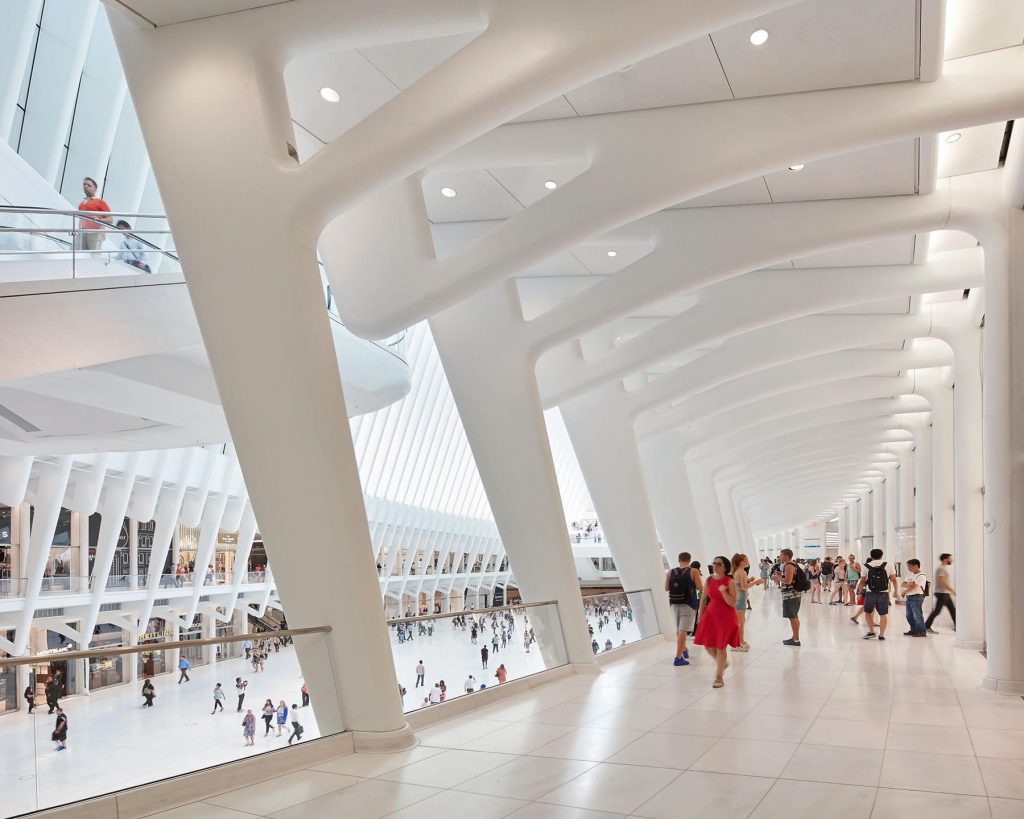
One World Trade Center, known as the tallest building in the United States, symbolizes reconstruction, resilience, and progress. This massive tower, located in New York, USA, replaced the former Twin Towers of the World Trade Center, which were destroyed in the September 11, 2001 attacks. Designed by architect David M. Childs and the architectural firm Skidmore, Owings & Merrill, it is considered one of the most important architectural projects of the 21st century. The building not only attracts attention for its architecture and design but also stands as a symbol of the strength, unity, and indomitable spirit of the American people and the world.
1. General Information
- Name: One World Trade Center
- Location: New York, USA
- Architect: David M. Childs and Skidmore, Owings & Merrill
- Opening Year: 2013
- Architectural Style: Modern Architecture
- Function: Office, commercial, and public spaces
- Height: 541 meters (1,776 feet)
- Status: Symbol of resilience and progress
2. Historical Background
The construction of One World Trade Center began after the destruction of the original World Trade Center towers in the September 11 attacks. This large reconstruction project was seen as a symbol of rebuilding and resuming economic and social activities in New York. In 2004, the initial design competition began, and David M. Childs emerged as the winner. The construction of the tower started in 2006 and was completed in 2013.
One World Trade Center was designed not only as an office and commercial building but also as a symbol of resilience and unity in the face of global crises. Combining modern design with advanced security principles, it has become one of New York’s most important architectural landmarks.
3. Architectural Features
One World Trade Center is renowned for its unique and innovative design. Standing at a height of 541 meters, it is the tallest building in the United States and the fourth tallest building in the world. Its design simultaneously represents strength and power, while also showcasing beauty and advanced technology.
a. Exterior Design
The exterior of the building is characterized by a combination of glass, steel, and concrete, providing a sleek and modern look while ensuring strength and stability. The façade of the tower is octagonal in shape, with a symmetrical appearance from all angles. This design not only enhances the building’s aesthetics but also enables it to withstand various weather conditions and provide maximum security.
b. Towers and Structural Features
One World Trade Center has 101 floors, with sections of it dedicated to office spaces, restaurants, public spaces, and a museum. At the top of the tower is a metallic spire that contributes to the building’s final height.
c. Interior Design
The interior of One World Trade Center is designed using high-quality materials with a modern and functional layout. The main lobby is vast and designed to convey both elegance and seriousness. The interior spaces are meant for commercial and office use, but there are also areas open to the public, such as cultural exhibitions and public spaces.
4. Purpose and Function
One World Trade Center serves as a multi-purpose building, used for various functions. Primarily, it functions as an office and commercial center, housing the offices of various companies, retail spaces, and public areas. Additionally, One World Trade Center offers exhibition spaces, cultural venues, and an observation deck for visitors, promoting both business and cultural exchange.
5. Construction Challenges and Advanced Technologies
The construction of One World Trade Center faced several challenges, particularly due to its complex design. Security considerations were a key factor in the planning, as the building had to withstand potential threats. Advanced technologies and materials were utilized to ensure the building’s resilience, and cutting-edge engineering methods were employed to bring the unique design to life.
6. Cultural Significance and Symbolism
One World Trade Center stands as a symbol of resilience and unity in the face of the September 11 attacks. It is a landmark representing the strength and perseverance of New York and the American people in the aftermath of a tragedy. The tower blends modern design with security and symbolizes renewal and reconstruction following a crisis.
7. Visitor Experience
Visitors to One World Trade Center can enjoy panoramic views of New York from the top of the tower. The building also houses museums and exhibitions related to the history and impact of the September 11 attacks on the United States. Visiting the tower provides an opportunity to explore New York’s history and modern architecture.
Conclusion
One World Trade Center is not only recognized as an architectural masterpiece but also as a symbol of rebuilding and resilience in the face of tragedy. Its modern and functional design, combined with advanced technologies and its cultural significance, makes it one of the most important attractions in New York and the world. This tower continues to represent unity, strength, and progress in the face of global challenges, standing as a symbol of hope and perseverance.


No comments yet.